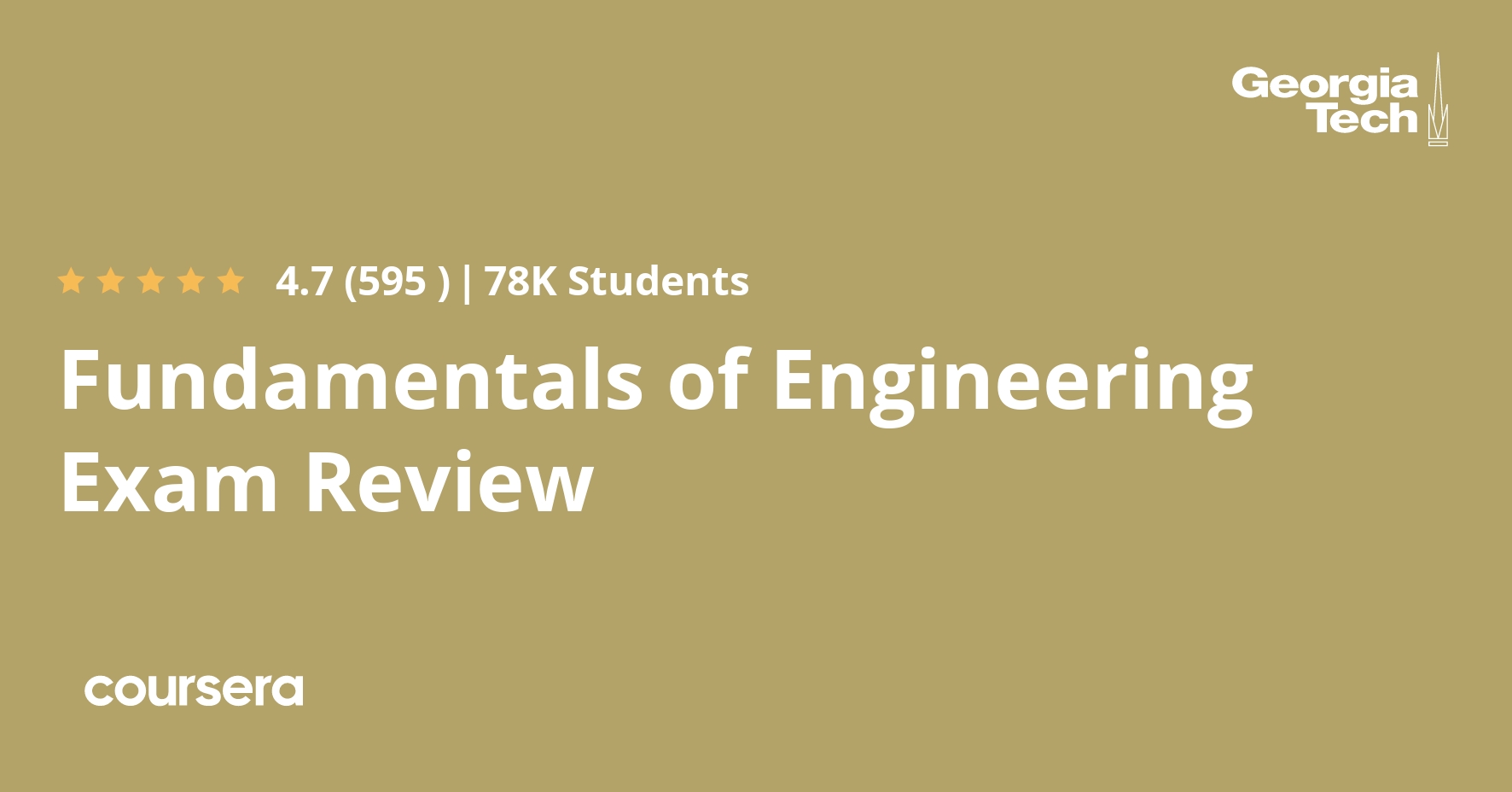Description
The purpose of this course is to review the material covered in the Fundamentals of Engineering (FE) exam to enable the student to pass it. It will be presented in modules corresponding to the FE topics, particularly those in Civil and Mechanical Engineering. Each module will review main concepts, illustrate them with examples, and provide extensive practice problems.
What you will learn
ABOUT THIS COURSE
This section of the course will provide you with an overview of the course, an outline of the topics covered, as well as instructor comments about the Fundamentals of Engineering Exam and reference handbook.
Mathematics
This module reviews the basic principles of mathematics covered in the FE Exam. We first review the equations and characteristics of straight lines, then classify polynomial equations, define quadric surfaces and conics, and trigonometric identities and areas. In algebra we define complex numbers and logarithms, and show how to manipulate matrices and determinants. Basic properties of vectors with their manipulations and identities are presented. The discussion of series includes arithmetic and geometric progressions and Taylor and Maclaurin series. Calculus begins with definitions of derivatives and gives some standard forms and computation of critical points of curves, then presents grad, del and curl operators on scalar and vector functions. Differential equations are calcified and to methods to solve linear, homogenous equations are presented. Fourier series and transforms are defined along with standard forms, and finally Laplace transforms and their inverse are discussed. In all cases, basic ideas and equations are presented along with sample problems that illustrate the major ideas and provide practice on expected exam questions.Time: Approximately 4.5 hours | Difficulty Level: Medium
Probability and Statistics
This module reviews the basic principles of probability and statistics covered in the FE Exam. We first review some basic parameters and definitions in statistics, such as mean and dispersion properties followed by computation of permutations and combinations. We then give the definitions of probability and the laws governing it and apply Bayes theorem. We study probability distributions and cumulative functions, and learn how to compute an expected value. Particular probability distributions covered are the binomial distribution, applied to discrete binary events, and the normal, or Gaussian, distribution. We show the meaning of confidence levels and intervals and how to use and apply them. We define and apply the central limit theorem to sampling problems and brieflyt- and c2. We define hypothesis testing and show how to apply it to random data. Finally, we show how to apply linear regression estimates to data and estimate the degree of fit including correlation coefficients and variances.In all cases, basic ideas and equations are presented along with sample problems that illustrate the major ideas and provide practice on expected exam questions. Time: Approximately 3 hours | Difficulty Level: Medium
Statics
This module reviews the principles of statics: Forces and moments on rigid bodies that are in equilibrium. We first discuss Newton’s laws and basic concepts of what is a force, vectors, and the dimensions and units involved. Then we consider systems of forces and how to compute their resultants. We discuss the main characteristics of vectors and how to manipulate them. Then the meaning and computation of moments and couples. We discuss the concept of equilibrium of a rigid body and the categories of equilibrium in two dimensions. We show how to draw a meaningful free body diagram with different types of supports. Then how to analyze pulleys and compute static friction forces and solve problems involving friction. The concept and major characteristics of trusses are discussed, especially simple trusses, and we show how to analyze them by the method of joints and the method of sections. Finally, we analyze the geometrical properties of lines, areas, and volumes that are important in statics and mechanics of materials. These are moments of inertia, centroids, and polar moments of inertia of simple and composite objects. In all cases, basic ideas and equations are presented along with sample problems that illustrate the major ideas and provide practice on expected exam questions.Time: Approximately 3 hours | Difficulty Level: Medium







